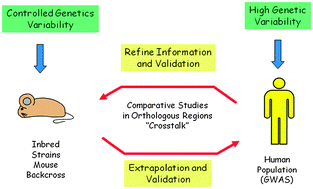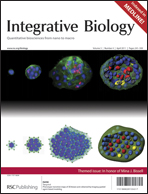Cancer evolution and individual susceptibility†
Abstract
Cancer susceptibility is due to interactions between inherited genetic factors and exposure to environmental carcinogens. The genetic component is constituted mainly by weakly acting low-penetrance genetic variants that interact among themselves, as well as with the environment. These low susceptibility genes can be categorized into two main groups: one includes those that control intrinsic tumor cell activities (i.e.apoptosis, proliferation or DNA repair), and the other contains those that modulate the function of extrinsic tumor cell compartments (i.e. stroma, angiogenesis, or endocrine and immune systems). Genome-Wide Association Studies (GWAS) of human populations have identified numerous genetic loci linked with cancer risk and behavior, but nevertheless the major component of cancer heritability remains to be explained. One reason may be that GWAS cannot readily capture gene–gene or gene–environment interactions. Mouse model approaches offer an alternative or complementary strategy, because of our ability to control both the genetic and environmental components of risk. Recently developed genetic tools, including high-throughput technologies such as SNP, CGH and gene expression microarrays, have led to more powerful strategies for refining quantitative trait loci (QTL) and identifying the critical genes. In particular, the cross-species approaches will help to refine locations of QTLs, and reveal their genetic and environmental interactions. The identification of human tumor susceptibility genes and discovery of their roles in carcinogenesis will ultimately be important for the development of methods for prediction of risk, diagnosis, prevention and therapy for human cancers.

- This article is part of the themed collection: In honor of Mina J. Bissell

 Please wait while we load your content...
Please wait while we load your content...